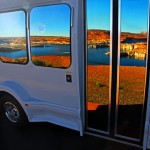Palmyra, Syria – Desert Tears (23.05.15)
This week’s news that the historical city of Palmyra, in Eastern Syria, has fallen to Islamic State forces is devastating for the local people and possibly for the preservation of the ancient city’s outstanding ruins of antiquity.

While the human tragedy in the region has been drawn into particular focus over the past few years, Palmyra’s plight, which one assumes will now involve the plundering and destruction of the magnificent ancient ruins, is particularly relevant for us at Nomadic Thoughts. Palmyra was, until recently, one of our most popular and impressive Middle Eastern travel destinations, offering as it did a chance to experience a desert region’s history, for centuries the crossroads of several civilizations.
I first visited these extraordinary ancient sites nineteen years ago when Nicki, my wife, and I were hoping to expand Nomadic Thoughts’ travel programmes across Central and Eastern Syria. Our memories of travelling in this secluded desert region are predominantly of the friendly, welcoming people who were enthusiastic about what was then a new and exciting tourism opportunity.

We were shown the plans for new hotels and restaurants that would welcome visitors to their proud town on the edges of the Syrian Desert. Since the mid-1990s Nomadic Thoughts has successfully arranged trips to sites which originated in the early second millennium BC. Gazing out from a nearby roof top towards the ancient city, I remember the incredible sight of the desert preserved pillars standing to attention aside the Temple of Beli. Equally the Temple of Baalshamin seemed to resonate as if it were still the heart and soul of a bustling caravan trading outpost.
The majestic Arab Fort is positioned atop the nearby hillside overlooking the ancient city, which was originally established as an oasis town for desert caravan traders. You can still see the desert-scape fall away into the distance towards modern-day Iraq, as it has done since the Roman Empire’s influence from the mid-first century.

Having survived, developed and benefitted under a host of people, creeds and cultures over the centuries, Palmyra might stand a chance of surviving Islamic State. One hopes that the spirit of Queen Zenobia – Palmyra’s most famous daughter (240-275AD) – shines through.
Although brutal in her own way – beheading the Roman prefect Tenagino Probus – she did surround herself with philosophers and poets, unlike today’s invaders who appear hell bent on erasing history through destruction.
We at Nomadic Thoughts very much hope to be sending travellers to the World Heritage site of Palmyra again at some point in the future.
What state of ruin their ancient exhibits will be in then, only time will tell.









